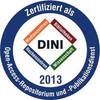English Title: Comprehensive Utilization of Airborne laser Scanning in Natural Hazard Studies in Alpine Areas
In: Zorn, Matija (Hrsg.): Od razumevanja do upravljanja. Ljubljana, ZRC SAZU, Založba ZRC 2010, pp. 125-137 (Naravne nesreče ; 1) . ISBN 978-961-254-564-2
Preview |
PDF, other
- main document
Download (1MB) | Terms of use |
Abstract
V gorskem svetu so antropogene strukture občutljive na geološke, geomorfološke, hidrološke ali izjemne vremenske pojave. Ocena potencialne škode je pomembna za načrtovanje protiukrepov. Pri modeliranju možnih scenarijev nesreč potrebujemo poleg podatkov o ranljivih antropogenih strukturah tudi prostorske topografske podatke. Aero-lasersko skeniranje (ALS) je osnovno orodje, ki omogoča pridobivanje podrobnih podatkov o premikih gmot, eroziji in podobnih pojavih, z vertikalno natančnostjo 10 cm. Z naprednim (pol)samodejnim procesiranjem pridobivamo podatke o topografiji, višini gozda, obliki stavb, daljnovodih itd. Pridobljeni rezultati so kombinirani z dodatnimi podatki za oceno potencialne škode (npr. funkcija in vrednost stavb). Dobljene informacije ter modele določenega tipa nesreče (npr. sprožitev snežnega plazu) integriramo v preliminarnem (brez preverjanja z referenčnimi podatki) funkcionalnem objektnem modelu za oceno potencialne škode, ki temelji predvsem na uporabi aplikacij ALS.
Translation of abstract (English)
Man-made structures in mountainous areas are prone to hazards related to geological, geomorphic, hydrological or extreme weather phenomena. The estimation of potential damage is important to plan countermeasures. Beside of the data on vulnerable man-made structures, spatial data are needed on the topography to model the possible disaster scenarios. Airborne Laser Scanning (ALS) is an ultimate tool for elevation data acquisition with 10 cm accuracy and high data density to monitor the mass movements, erosion and related phenomena. With sophisticated (semi)automated processing the topography, forest height, shape of buildings, power lines can be extracted. These results are combined with auxiliary data (function and value of buildings) to estimate the potential damage. The functional object modelling integrates the derived data with the models of specific disaster types (e.g. avalanches) to assess the potential damage.
| Document type: | Book Section |
|---|---|
| Editor: | Zorn, Matija |
| Title of Book: | Od razumevanja do upravljanja |
| Series Name: | Naravne nesreče |
| Volume: | 1 |
| Publisher: | ZRC SAZU, Založba ZRC |
| Place of Publication: | Ljubljana |
| Date Deposited: | 29 Jul 2025 08:41 |
| Date: | 2010 |
| ISBN: | 978-961-254-564-2 |
| Page Range: | pp. 125-137 |
| Faculties / Institutes: | Fakultät für Chemie und Geowissenschaften > Institute of Geography |
| DDC-classification: | 550 Earth sciences |
| Uncontrolled Keywords: | natural hazard, Alpine area, airborne laser scanning, DTM, functional object modelling |
| Further URL: |









